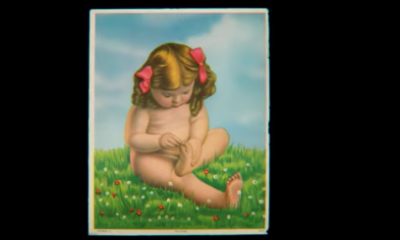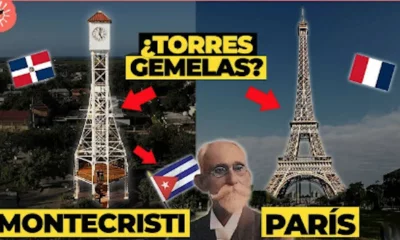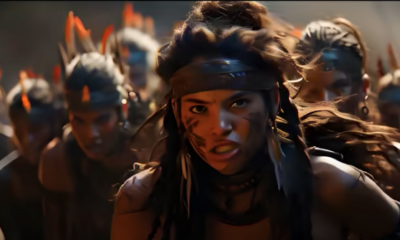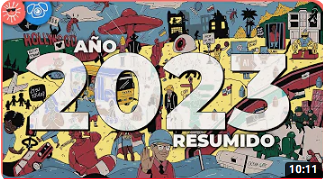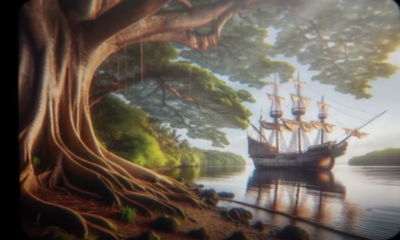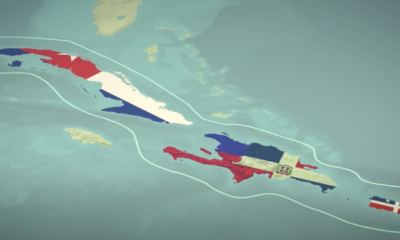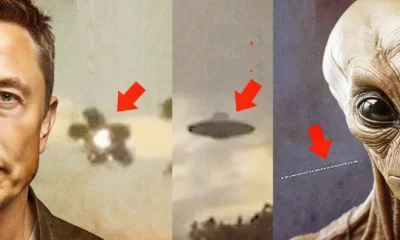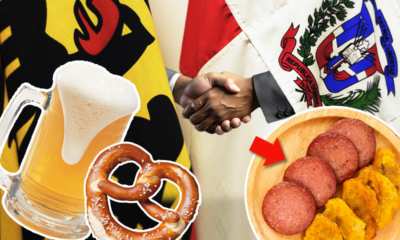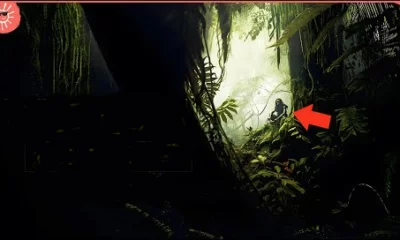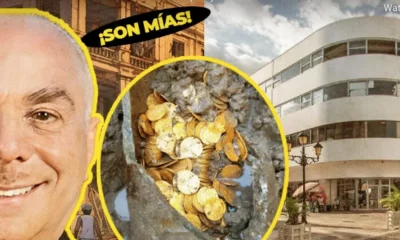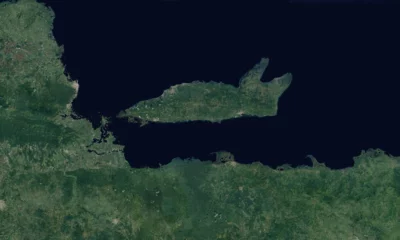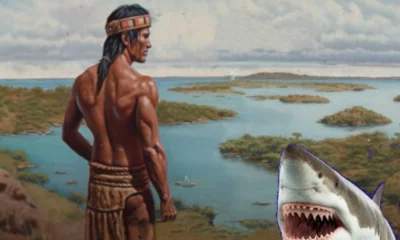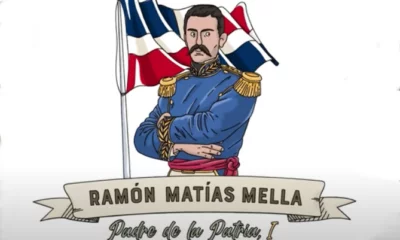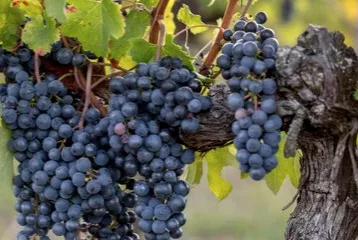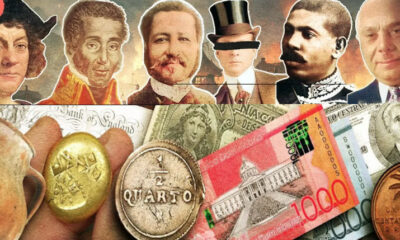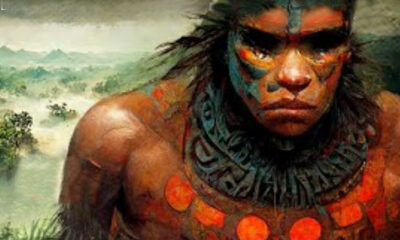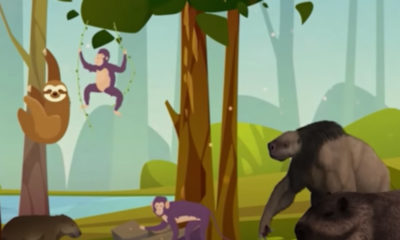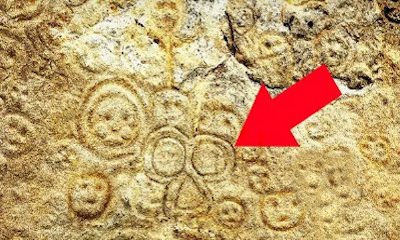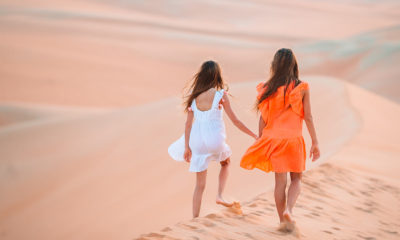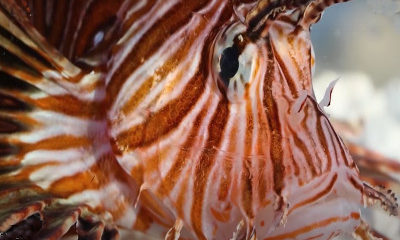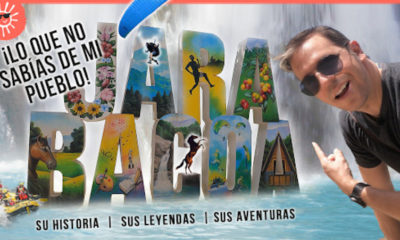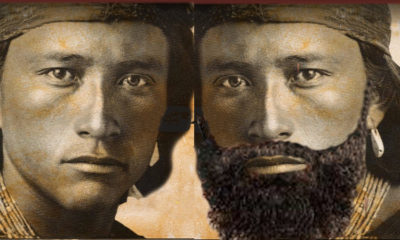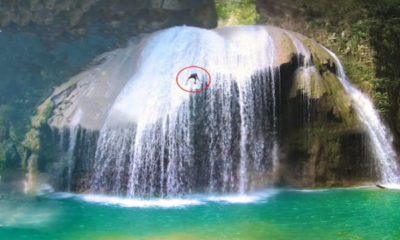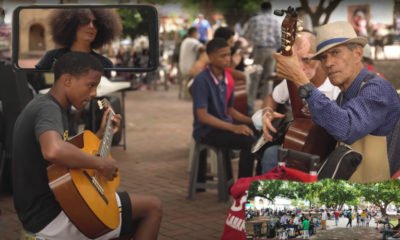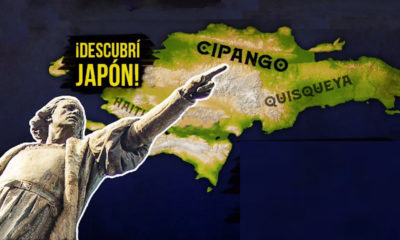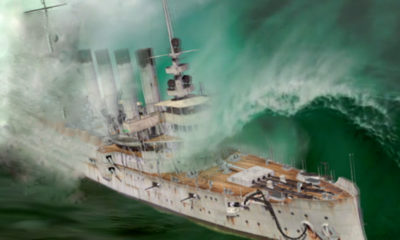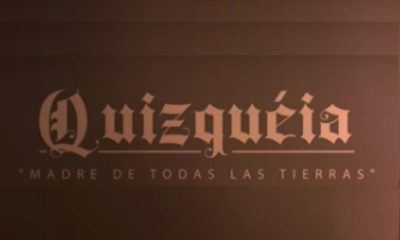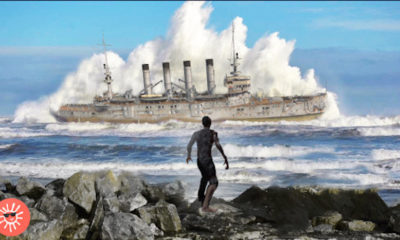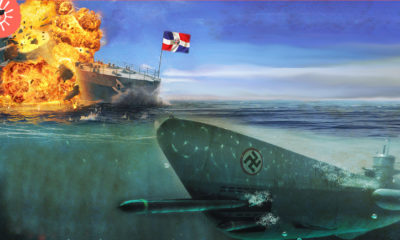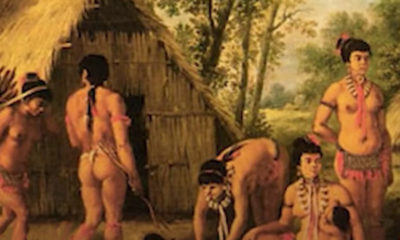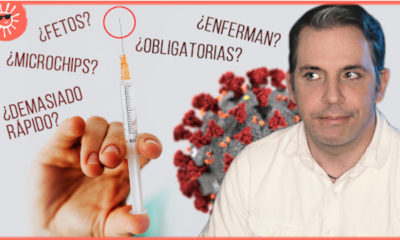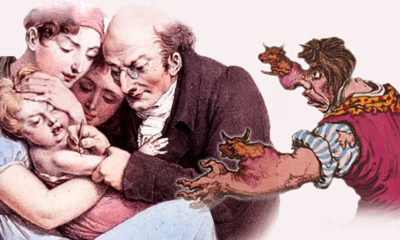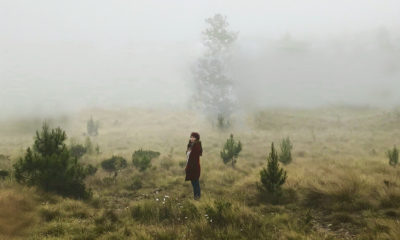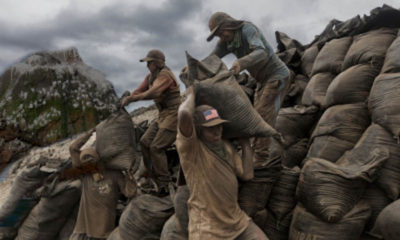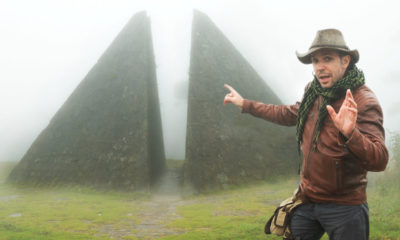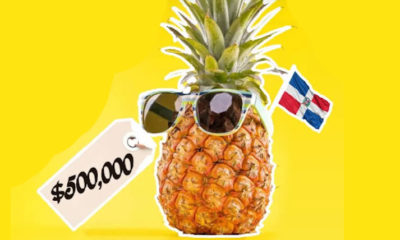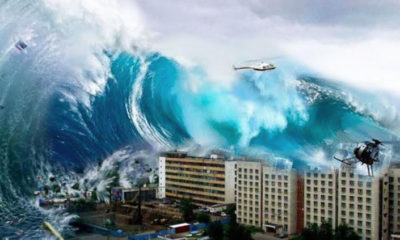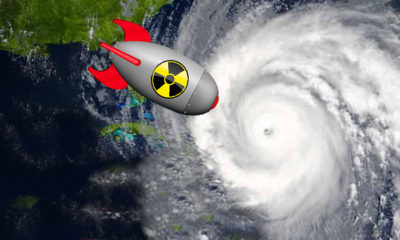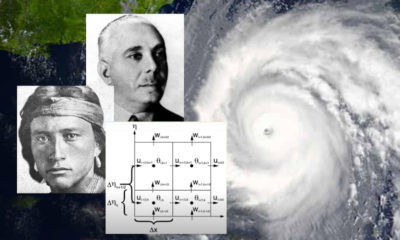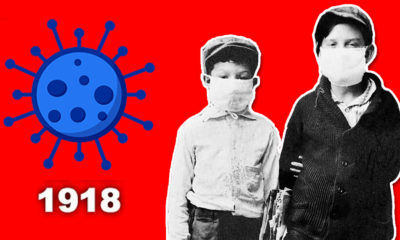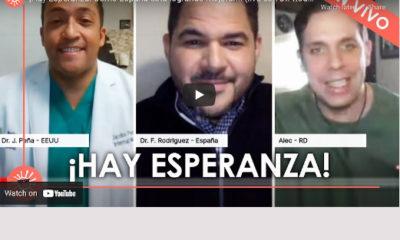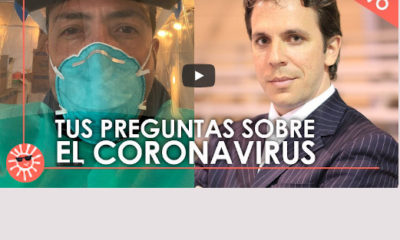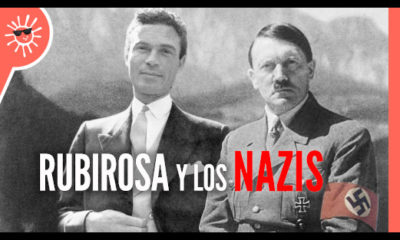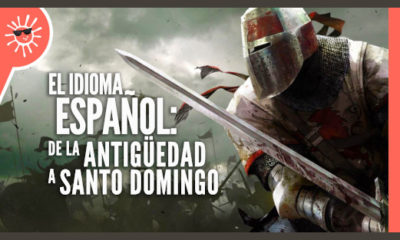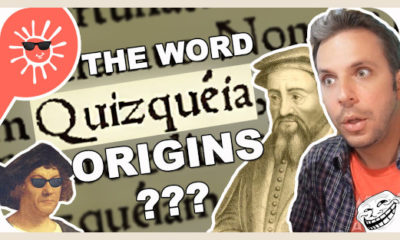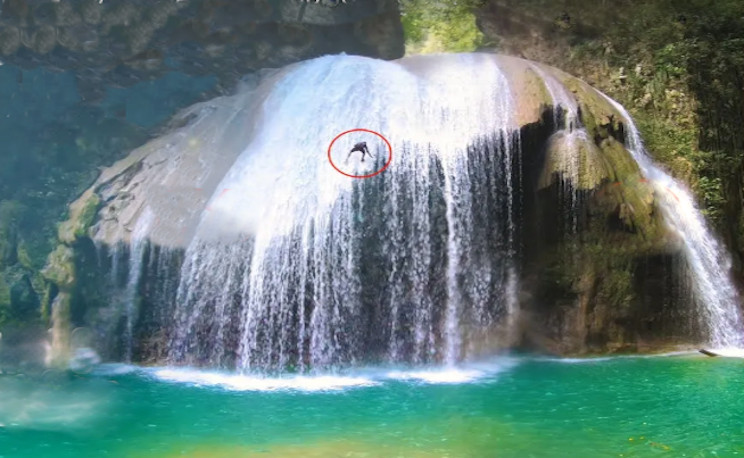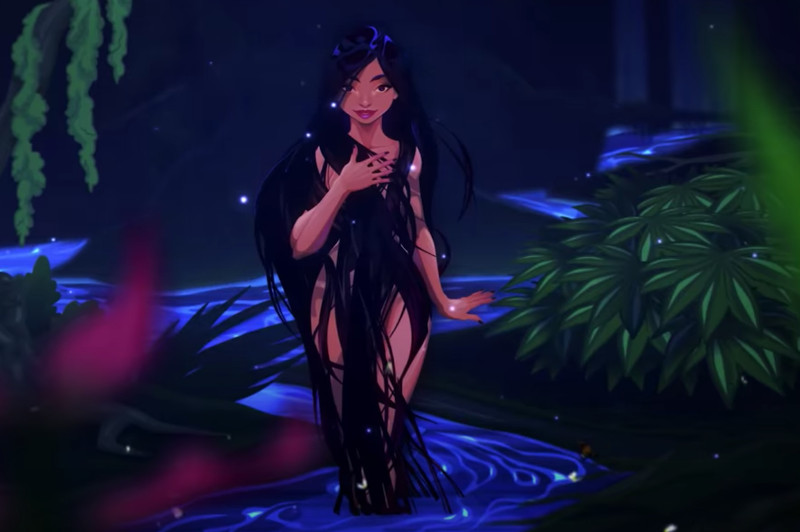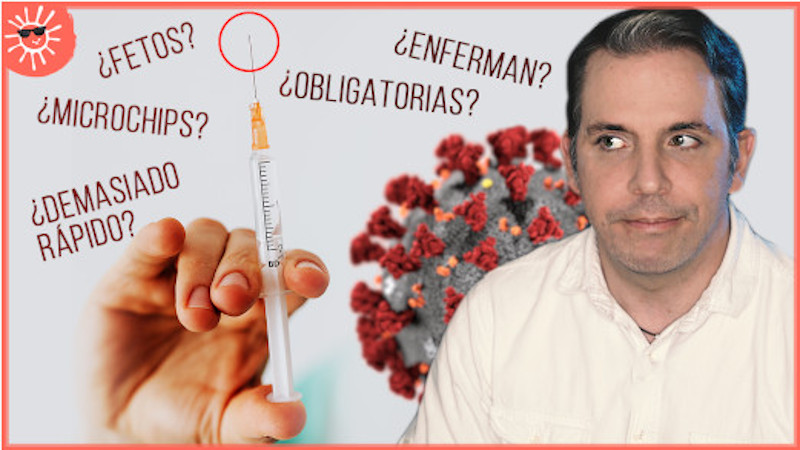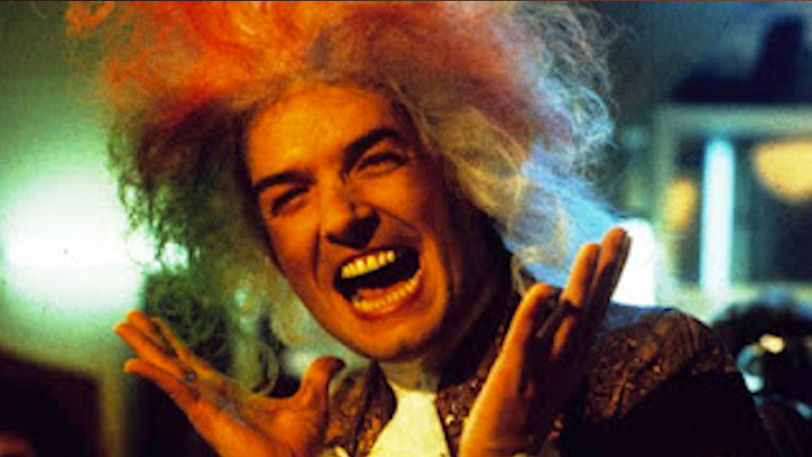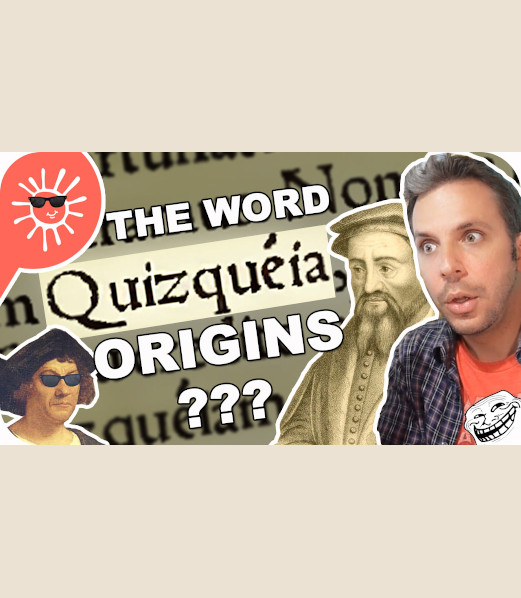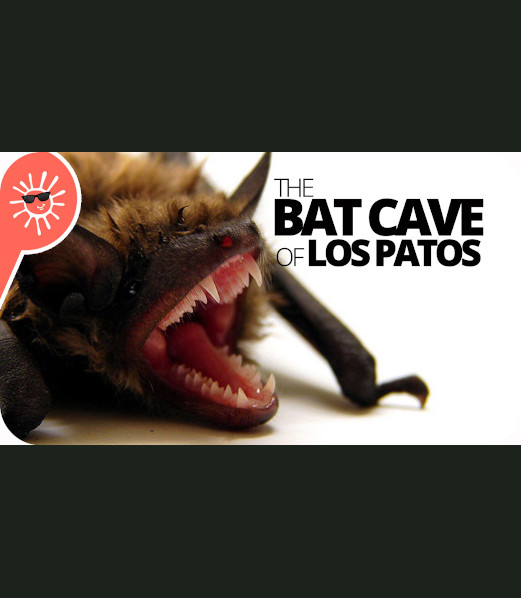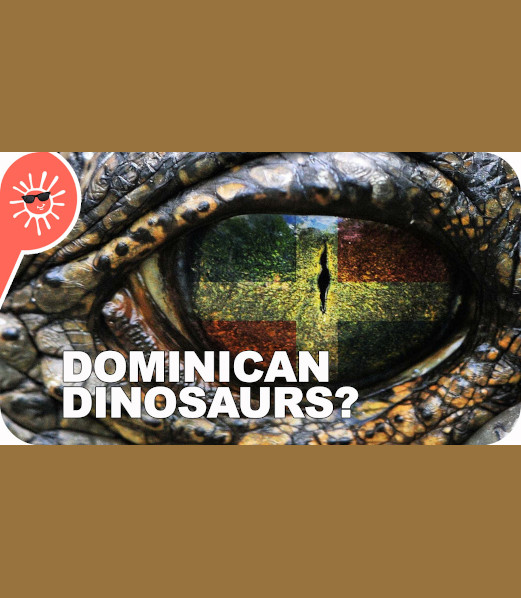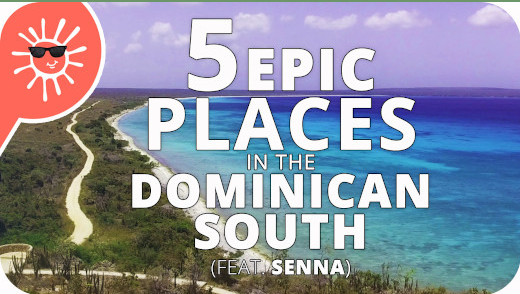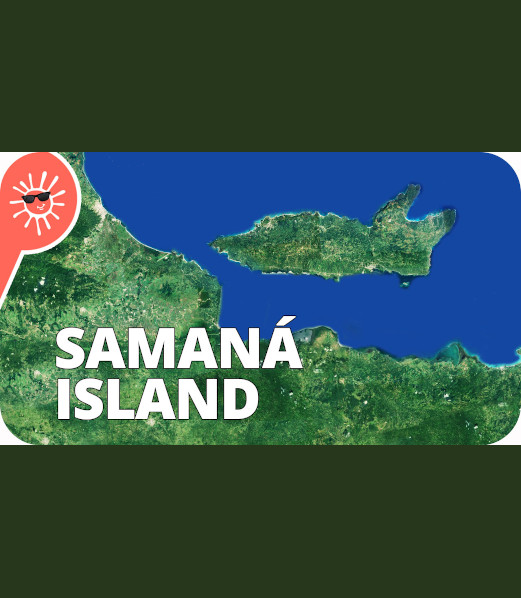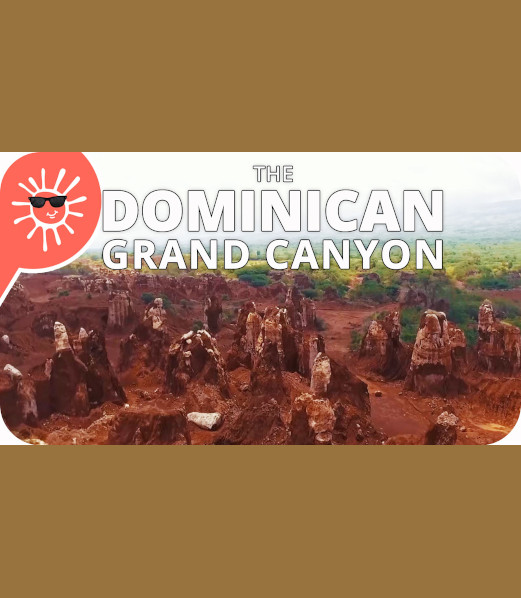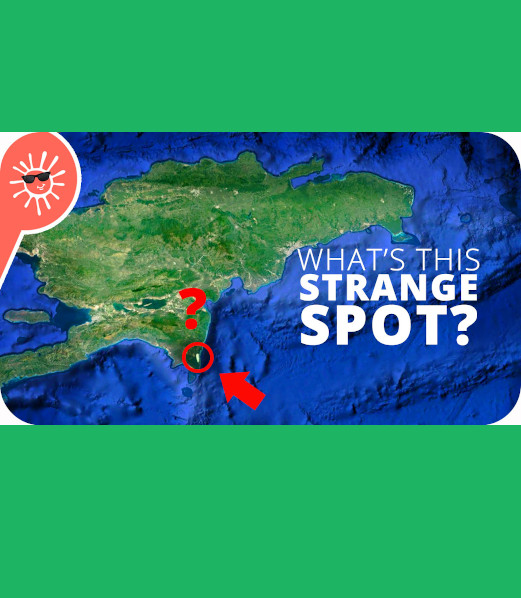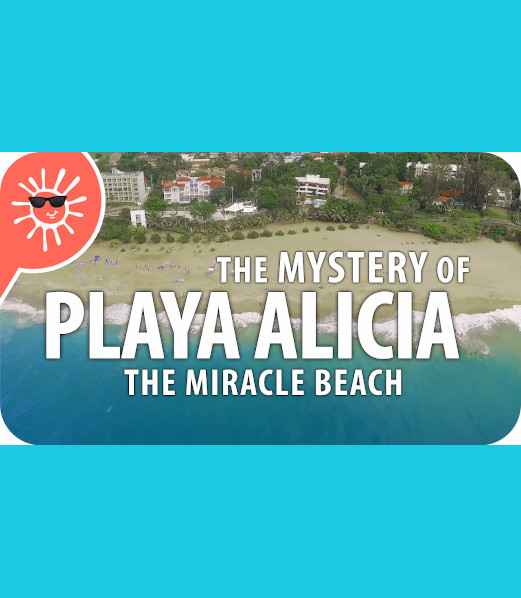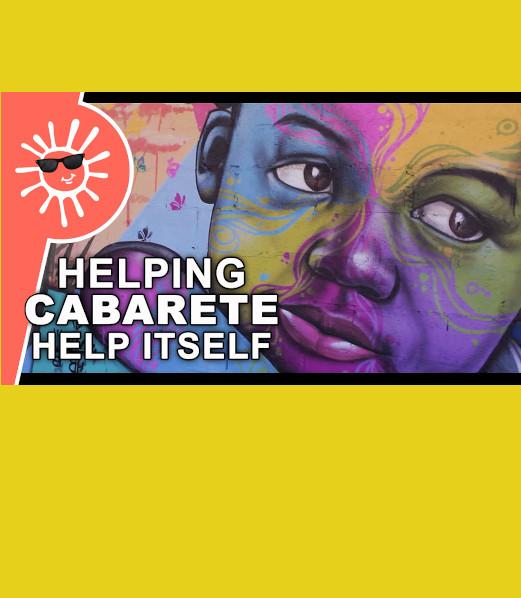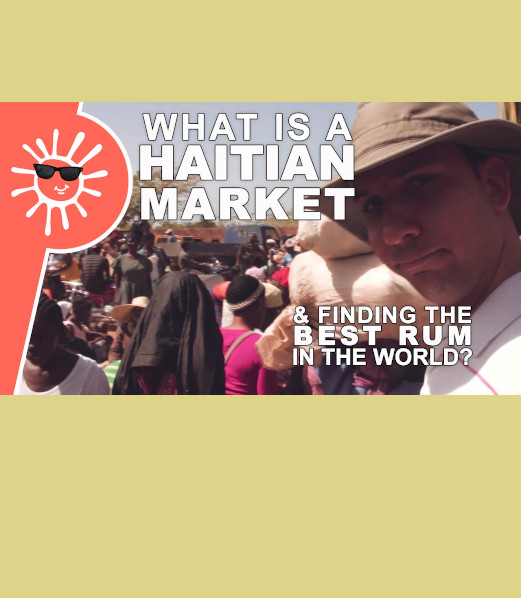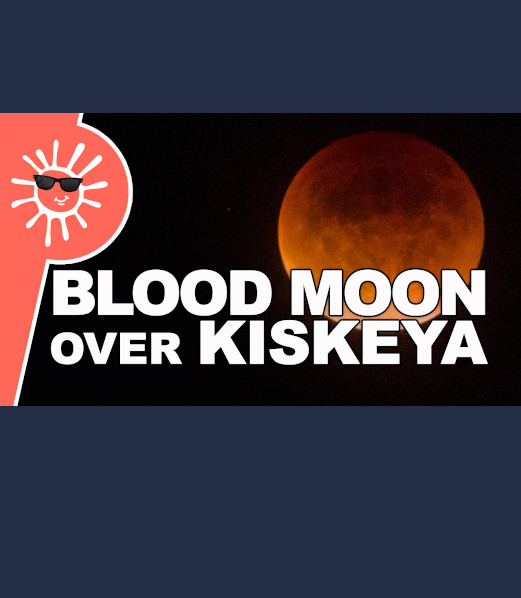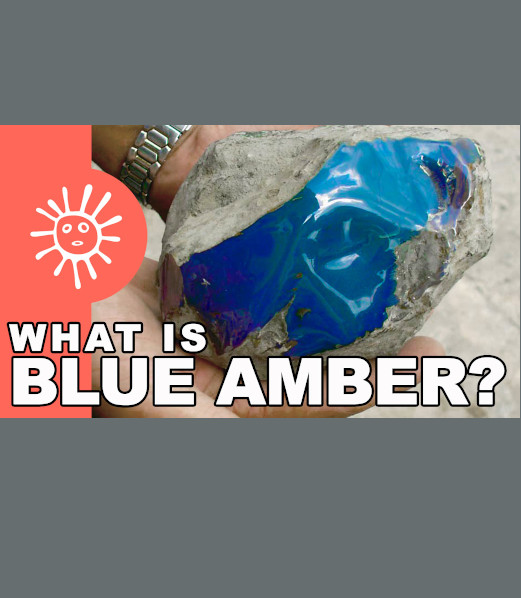From 1770 to 1920 several smallpox epidemics struck Santo Domingo and the Dominican Republic. They were brave doctors who tried to get vaccines for the Dominican people, often at personal cost and without support from the current government.
But the biggest reason why epidemics struck the country so many times was not because of a lack of vaccines: it was because the people were afraid of vaccines and refused to be vaccinated.
—————————
The story of good viruses
When we hear the word ‘virus’ we think of sickness and death. But that is actually wrong. There are millions of millions of viruses on our planet, and most — some scientists believe more than 99% — are actually good. Only about 220 are known to be harmful to humans.
Viruses are humanity’s oldest companions, existing with us in a symbiotic relationship, and without them we could not exist. Humans need viruses.
We often only focus on the bad 1%, because those are the ones that impact our lives directly, and we forget the good all the other 99% do for us — from creating oxygen to keeping our bodies healthy. But it was the bad viruses that made us aware of the existence of viruses in the first place. For thousands of years we noticed their effects, but we didn’t understand the why and how.
The story of Quarantines
Some ancient societies knew there was something dangerous out there and acted accordingly. In the bible and the Torah for example there are laws for disinfecting, and requiring the sick to stay in quarantine and to keep social distancing.
It was clearly understood that keeping the sick and the healthy separated reduced the risk of infections, although they didn’t understand why. It was also understood that if you became sick with certain illnesses and survived, you would never get sick again with that illness — but again, the why was not understood.
Still, this line of thought helped some to reason that if one was only slightly infected with a bad virus, it could be possible to survive the illness and become immune. One such bad illness was smallpox.
The story of Smallpox
The earliest known evidence for the existence of smallpox was found on Egyptian mummies, making smallpox one of the oldest and deadliest diseases to ever exist, possibly having killed billions.
Its symptoms include fever and vomiting, followed by the formation of ulcers in the mouth and a skin rash, which turn into fluid-filled blisters. The bumps then would scab over and fall off, leaving scars and often blindness.
But survivors — it killed on average about 30% — and even those who got only a little bit sick, afterwards became immune entirely. So doctors asked: if we made someone just a little bit sick, would they become immune?
The answer is: yes. In Asia doctors blew powdered scabs from other patients, and blew the dust up a person’s nose. In India and Africa doctors would make a small cut into a patient’s skin and rub the puss from another sick person into it. In other parts of Africa mothers would buy a cloth worn by a sick person and tie it to their healthy children.
This process was called variolation, and for the most part it worked. It became the standard preventive treatment for smallpox also in Europe, but it was not without dangers: some patients got badly infected and died, while others would have lifelong health issues. And some of the infected would then cause pandemics.
So the question remained: was there a safer way to prevent Smallpox? In the end it was a simple farmer and his cows who found the answer.
The story of Cows
There existed another illness, known as cowpox. It was similar to smallpox, but was not deadly either to cows or humans. It was also known that those who were infected with cowpox became immune to smallpox.
And so in 1770 a rural farmer in England named Benjamin Jesty inoculated his family with the pus from infected cows and indeed, his entire family became immune to smallpox. Jesty’s theory proved to be correct, but his neighbors thought it was disgusting what he had done and refused to take him seriously. And since Jesty was no doctor and never officially published his findings, he was never truly recognized for his discovery.
About 22 years later a young doctor named Edward Jenner had the same idea as Jesty and the same success. Jenner’s breakthrough came when he realized that this infection could be passed from one person to another, without the need of a cow, by using the fluid in the pustules. This eliminated the need of infected cows to have access to cowpox.
Jenner was credited with the discovery of this cure, although it was Jesty who did it first. But at long last a cure for smallpox had been found, and it changed the world forever.
The story of Anti-vaxxers
Jenner’s discovery became known as vaccination, from the latin Variolae vaccinae, the term devised by Jenner to denote cowpox. Mass vaccinations began in England, France and Spain.
But not everyone was willing to get vaccinated. Much like the neighbors of Jesty, some people believed that vaccination was nonsense — even dangerous — and since it originated from cows it could cause all sorts of weird reactions in humans. Others even felt smallpox was a just punishment sent by God, and therefore thought vaccination was an evil getting in the way of God’s will.
In any case, most people accepted the vaccinations and the vaccine — the collected pus from other infected persons — was sent round Europe. The problem was that the collected fluid did not survive long, so it had to be used quickly — very low temperature refrigeration did not exist yet. A second option was to send the recipe, so that local physicians could make the vaccine themselves, using a cow infected with cowpox.
But it was impossible to get the vaccine to America — because there were no cows with cowpox in America.
The story of the 22 Angels
The Spanish physician Dr. Francisco Javier de Balmis, sought to do mass vaccinations in all of Spain’s overseas territories, from America to the Philippines. King Charles IV had lost his daughter to smallpox, and so he gave Balmis his full support.
Balmis proposed using orphans infected with cowpox for the long voyage to America. He chose 22 healthy orphans between the ages of 3 and nine. Infecting a few innocent orphans may sound a bit cruel, but it worked. Also, the King instructed that the children be treated well and educated and returned to their homes at the end of the voyage, and so a group of nurses also accompanied them as guardians and teachers. As far as we know they all survived and are to this day known as the 22 Angels who brought the vaccine to America, saving possibly millions of lives.
The expedition vaccinated people all over South America and all the way up to Texas, all over Spanish territory. But the expedition never visited Hispaniola, because the island was no longer a Spanish colony, and so the vaccine didn’t make it at first to the Dominicans. In fact, smallpox was running rampant on the island.
The story of Smallpox in Santo Domingo
Smallpox arrived on Hispaniola at the same time as the conquistadors. The first outbreak seemed to have taken place just a year after Columbus arrived in 1493, although it’s not clear if it was smallpox or swine flu. From 1518 onwards smallpox outbreaks and other illnesses happened wave after wave, and those who suffered the most were the native Tainos. It is sad to note that chroniclers of the day explained that the cause of the illness was God, punishing the Tainos for worshiping false gods.
Along with wars, famines and forced labor, epidemics took most of the natives of Hispaniola, and many more on the other islands and the continent. By the time the vaccines arrived in America with the 22 Angels, the natives were long gone.
There were several smallpox waves on Santo Domingo over the centuries, but we do not have many details regarding each of these pandemics or how they were dealt with. We only know they were merciless. Around the 1770s the french lawyer and writer Médéric Louis Élie Moreau de Saint-Méry took stock of the local healthsystem, and while he was impressed with the relative good health of the Dominicans, he was surprised that they did not practice inoculation against smallpox, and noted that that was why it was so rampant.
Dominican doctors understood the importance of vaccines very well: they were just difficult to come by. It was Antonio María Pineda Ayala, a young Spanish doctor living and working in Santo Domingo, who in 1811 wrote the pamphlet Memories of a Vaccine, which attempted to encourage the understanding and use of vaccines in Santo Domingo and all of spanish-speaking America. His pamphlet has become the definitive treatise on vaccines of this time-period. And yet vaccines were hard to come by, and it was often down to individual doctors on the island to procure vaccines for their communities.
In Santo Domingo in 1843, during the Haitain occupation, medical authorities were unable to obtain vaccines from the Haitian government and so had to find them on their own. Thanks to the help of individuals they were eventually able to get some from Curazao and began a house to house vaccination.
But the biggest problem turned out not to be getting the vaccine: it was vaccinating a fearful population. Most people refused to be vaccinated or have their children vaccinated.
After the proclamation of the Dominican independence, new health laws were passed to control epidemics on a municipal level better, but vaccines were still hard to come by, and the constant fear of the populace to be vaccinated made the pandemics only worse, and they kept coming.
Story of the 1881 Smallpox pandemic
In 1881 a mass vaccination was implemented, beginning in Puerto Plata, especially with children. But it was about the same time that a ship arrived from St. Thomas, and on it a passenger brought smallpox to the island.
According to the distinguished Dominican doctor Francisco Moscoso Puello, the smallpox pandemic of 1881 is remembered as possibly the worst. Mortality was “extremely high”, and many died without medical assistance as people did not approach the sick for fear of infection. They would even wrap the sick in banana leaves so that their sheets would not get infected. Undertakers would wait in front of houses where there was some sick person to wait for him to die to remove them as quickly as possible, and there were cases in which relatives asked to have their still-living relative taken to the cemetery to have them die there.
However, even so there were many individuals who did try to help as much as they could, risking their own lives to help the sick, many of them doctors, but also many common citizens, such as the young man Hilario Espertín. The Dominican spirit of solidarity was alive, even in the face of such great fear. In fact, there is now a street named after Hilario Espertín in Santo Domingo.
By 1882 this particular pandemic had killed over 225 citizens. This number is considered high, especially taking into account that there were less than 100,000 people living in the city at the time. Many hundreds more were left with scars and permanent disabilities, such as blindness.
In the following years individual doctors as well as governmental institutions attempted to implement mass vaccinations, but people refused over and over again. The unwarranted fear of vaccines prevented Santo Domingo from ridding itself of smallpox for a long time. Even only 40 years after the 1881 pandemic, in 1920, another wave of smallpox ransacked the city. This time it was the American occupation force that tried to implement a vaccination, but the rebels asked the people not to accept the vaccines — it seemed that the fear of vaccines was bigger than the fear of the actual illness.
But in the following years it was again individual doctors who insisted on the importance of vaccinations.
The story of the End of Smallpox
On May 8, 1980, the 33rd World Health Assembly officially declared the world free of smallpox — it is considered the single greatest achievement in international public health. It took decades and a global mission of vaccination. Even in the Dominican Republic smallpox was eradicated by that time.
The story of the end of smallpox is the story of vaccines. After the discoveries of Jenner, many other scientists took it upon themselves to find cures for other diseases, using a similar method, most notably Luis Pasteur. The idea is the same as with Jenner’s vaccination and the process of variolation before it: trying to make a person only a little bit sick so the body could develop antibodies. And it was the same with the new coronavirus.
The story of SARS-CoV-2
At the beginning of the pandemic a lot of people were surprised to hear that scientists did not have any answers as to what that virus was all about and why there was no medication or a vaccine. That is because this type of coronavirus was one of those new ones that nobody had heard of before. Nobody really knew yet how to deal with it or what to do with it, and we were all speculating, and it’s understandable that that may be frustrating to some of us.
Sometimes we forget that virology, the science that studies viruses, is a very young science, so it shouldn’t be a surprise when a new virus is discovered — our understanding of viruses has only just begun, and despite exponencial advances in research and technology, we still don’t know that much. So it usually takes years for scientists to study a new virus and find a possible vaccine for it.
The fast development of vaccines for the new coronavirus has thus been hailed as the fastest in human history so far. The first possible working vaccine for COVID-19 was developed in just 42 days, but the process to test it, trial it, manufacture it and get it approved usually takes years. Thanks to a global support network among labs and scientists, it was possible to speed up this process and now, less than a year since the beginning of the pandemic, we have several possible vaccines available.
The different vaccines
The first step was for the virus’ genome to be sequenced, basically to determine the building blocks the virus is made of. This was done by a Chinese lab that then shared the results publicly for free. With that information, several different labs all over the world then attempted to find their own method of creating a vaccine.
While vastly different, the principle still is the same as in the time of Jesty and Jenner: finding a way to make a patient just a little bit sick with the virus, so the body can create antibodies to fight the virus. In other words, a vaccine is not really a cure — it’s a trigger for the body to create its own cure and heal itself. When you think about it, that’s amazing. The human body has the ability to cure itself, even against the most dangerous viruses such as Smallpox… if only given the chance. A vaccine tries to give it that chance.
Currently there are several vaccines in different countries under development, but not all details are known about all of them. There are two popular methods: the RNA vaccine and the virus vectors.
For the RNA vaccine a fragment of the coronavirus is used to create a messenger RNA, which, once injected, tells the body to create proteins which the body then recognizes as enemy proteins and creates antibodies. In other words, the injection triggers the body to create its own vaccine, which then triggers the creation of antibodies.
The virus vectors take another similar but harmless and modified virus, and using that one as the immune response trigger, much like Jesty and Jenner used the harmless cowpox virus to fight the smallpox virus.
Just like Jenner and the vaccine production afterwards, similar problems remain, such as how to transport them properly. These vaccines need to be stored at very low temperatures and have an expiration. Also, no method is perfect, so each vaccine variation has its good sides and bad sides and side effects. One may seem to be more effective, but is more expensive and requires multiple injections, while another may not be as effective but is cheaper and only requires one injection. In the end the results are hopefully the same — the body learns to fight the virus.
Chimcuna
The vaccine bought by the Dominican Republic is the AZD1222, created by AstraZeneca, a British company in conjunction with Oxford University. Much like Jenner used a cowpox virus to create a smallpox vaccine, this one as well uses a harmless virus from an animal. But instead of cows, it’s a virus from chimpanzees.
The reason for the government choosing the AstraZeneca vaccine is multifold: it is the cheapest — it costs only $4 dollars per dose — and is the easiest to transport as it does not require very low temperature refrigeration. This allows for faster and affordable distribution among the population. While it’s effectiveness may at first not seem as high as the much more expensive Pfizer/Moderna RNA vaccines — which between $20 and $37 per dose — virus vectors, such as the AZD1222 and the Russian Sputnik V, seem to be the most effective in the long run and are thus the most popular vaccines that are being put into use.
Are there secondary effects?
Surprisingly, very few. Since it is a weak virus meant to activate the immune system the body does need to fight this small infection, which sometimes can cause tiredness and some muscle pain. But even that goes away in a few days.
Will it alter our DNA?
The AZD1222 by AstraZeneca that will be used in the DR is an altered and harmless virus. It has no effect over human DNA.
It is true that the Pfizer/Moderna vaccine that will be used in the US uses coronavirus RNA as part of its process, but injecting RNA has no effect on the DNA of humans.
How many will we need?
With the Pfizer/Moderna vaccines more than one injection may be required. The AstraZeneca should work with only one, but a second might be recommended to strengthen the immune system even further.
Will they cost?
The government has promised to make them free. Although whoever puts it on you could charge for their service.
Will they be obligatory?
Not likely. All we can ask for is that people take the importance seriously and accept the vaccine. Private employers may require their employees to be vaccinated, but that is up to each individual business.
Is there a microchip in the vaccine?
No. The technology for such tiny chips doesn’t exist. While there are experiments in chip miniaturization, none of them can do what conspiracy theorists claim.
Life after Covid
The goal of the vaccine is to create the so-called herd immunity, meaning that as most people become immune to the virus, the virus itself can no longer infect anyone and will slowly die out, or adapt itself and become weaker. The result is that the virus will no longer be so dangerous. It will still be with us, but it may just turn into a seasonal illness, such as the common cold, something our bodies have learned to fight. This is what happened for example to the virus of the Spanish flu. But to achieve herd immunity, about 70% of the population must be immune.
But getting the vaccine does not mean life will go back to normal anytime soon. Even once you are inoculated, it will take a while for your body to adapt and become immune. It is even very possible that some will never be entirely immune, or the virus mutates again and the current vaccines become useless, and new ones need to be created.
At this point we don’t really know yet what will happen over the next year. We all hope that with the start of the vaccination process we may see a change in the current situation and a drop in global infections. But humans have never done such a massive battle against such a virus this quickly on such a scale, so we don’t know yet how it all will turn out.
We only know that if we all take it seriously, we can make things eventually better…


